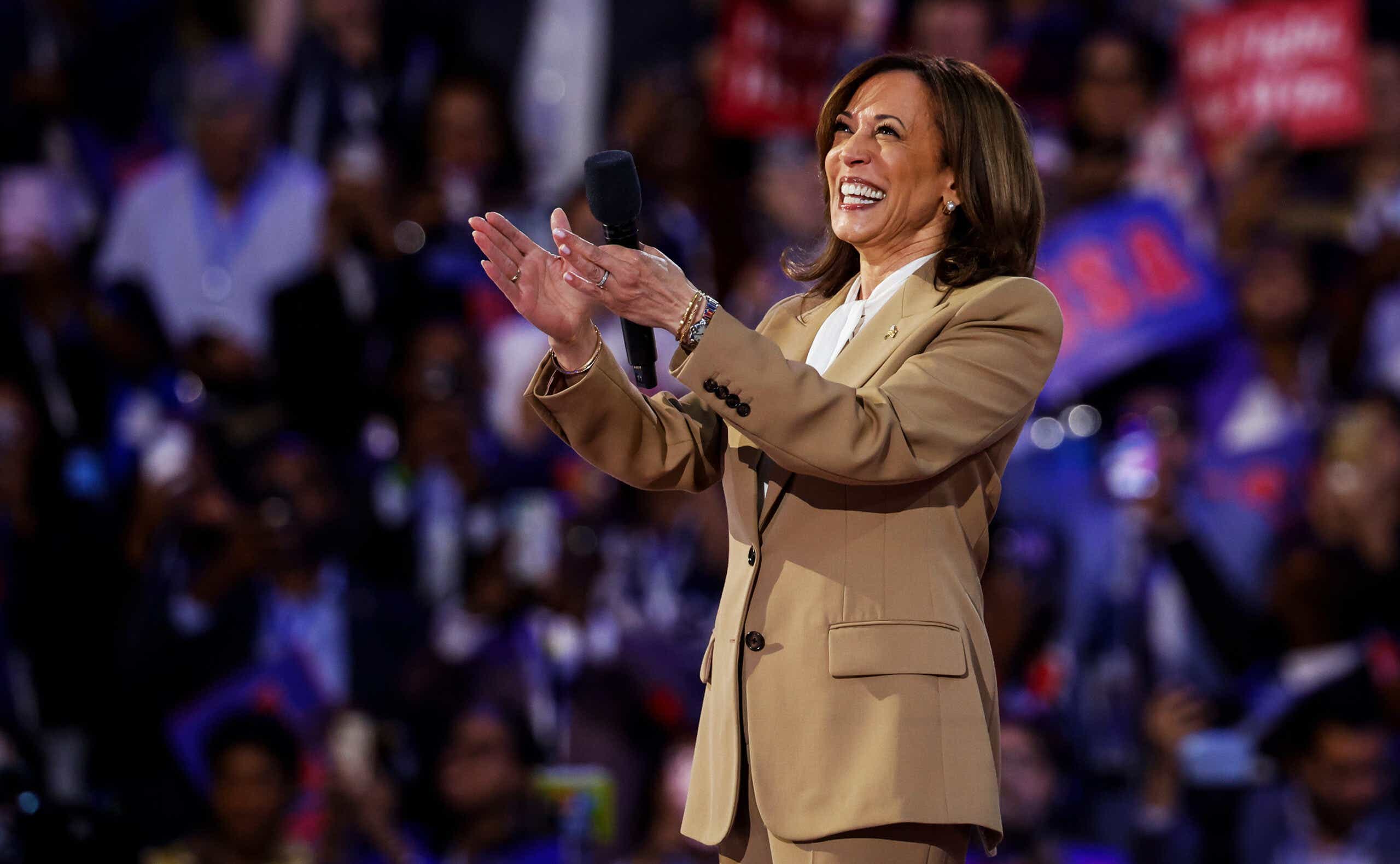A lot can happen in a month — just a few weeks ago, Democrats faced grim election prospects. But then President Biden dropped out of the race and his Vice President replaced him, leading to a stunning turnaround for the party.
Several national and state polls have Harris narrowly ahead of former President Trump. Her whirlwind tour of battleground states with VP nominee Tim Walz will likely generate even more favorable media coverage on top of the infectious energy surrounding the Democratic National Convention. This week, political heavy hitters, like former President Obama and former First Lady Michelle Obama, have been bringing their star power to the DNC stage to boost Harris’s campaign. But will her honeymoon continue after the convention?
No survey is more closely watched than those conducted after parties hold their conventions. Long known to reveal a convention bump or bounce polls, these surveys gauge momentum after a party has had a chance to widely promote its platform and candidate.
Though most candidates have traditionally benefited from these events, here’s why some experts have questioned the significance of this measure in more recent years.
What are post-convention bumps exactly?
Candidates typically see post-convention bumps or bounces if they’ve successfully engaged and activated their supporters and changed some minds as a result of the event.
Republican pollster Frank Luntz explains it best: “A convention bounce is the percent of people who were not considering voting for you but have changed their minds based on four days of programming.”
But political scientist Thomas Holbrook, Ph.D., emphasizes that these bumps aren’t what they used to be — in fact, they’ve been decreasing over the last several decades. In his blog Politics by the Numbers, he notes that the average size of post-convention polling bounces dropped from 6.9 percent in the elections between 1964 and 1980 to just 2.4 percent in the 2000 to 2016 era. Of course, there were some notable exceptions, like Bill Clinton’s 16-point bounce in 1992, Jimmy Carter’s 10-point bounce in 1980, and Ronald Reagan’s eight-point bounce that same year.
Holbrook believes several factors are causing the decline, including increasing political polarization. “I like to think of conventions as shoring up the party’s base, persuading undecided voters, and maybe even attracting a few voters from the other party,” he tells us. “But fewer of those voters are likely to be persuaded these days.”
Will Kamala Harris see a boost after the DNC?
Some pollsters argue that Harris might’ve already seen her big boost in the polls before the convention, mainly due to the historical circumstances of her entrance into the presidential election. “Harris could see a little more of a bump, but in many ways, she’s enjoying it right now,” says Siena College Research Institute director Don Levy.
Luntz shares this sentiment, saying Harris’s “upside is limited.” However, he also said she could still “end up with a five- or six-point lead over Trump” if she continues to have a successful convention. “We’re so evenly divided now that anything more than 6 percent will truly be spectacular,” he adds.
Harris indeed improved the Democrats’ position almost immediately after jumping into the race. According to a poll released by the Pew Research Center last week, Harris has already almost erased the enthusiasm gap between Democrats and Republicans: 62 percent of Harris voters said they strongly support her, up from Biden’s 43 percent in July. That’s almost neck and neck with Trump’s respective 64 percent.
Despite firing up the party’s base, the Democratic nominee remains a largely unknown figure among undecided voters, and some pollsters say that creates an opportunity for her to gain more support following the week-long convention.
“Harris isn’t that well-known and defined politically,” says Lee Miringoff, Ph.D., director of the Marist College Institute for Public Opinion. “And the vice presidential nominee Tim Walz is even less known, so she can define herself on her own terms and pick up any voters still on the fence.”
And what about Trump?
Trump’s convention bounce is a little murky due to surrounding events, according to Gerhard Peters, who’s part of the non-profit American Presidency Project (APP), which tracks these bumps. Just two days before the Republican National Convention, Trump survived an assassination attempt, and then President Biden dropped out of the race a day after it ended.
“At the APP, we haven’t tried to compute a convention bounce yet for Trump,” Peters tells us. “It’s difficult with [the assassination attempt] and Biden then dropping out on the Sunday immediately following the GOP convention.”
However, Peters points to some findings from the nonpartisan American Enterprise Institute, which found that the Republican nominee gained less than a point afterward. “This bump seems reasonable to me at face value,” he says. “One issue in this election is that the preference numbers have been very stable overall, so any bounce will be small.”
Miringoff believes the former president’s meager increase was affected by Democrats’ shake-up. “Trump’s slight post-convention bounce was short-lived,” he tells us. “Biden’s dropping out and smooth transition to Harris were game-changers.”
Luntz acknowledges Trump’s unsubstantial post-RNC bump but isn’t as quick to blame it on the external events. “The whole reason for the convention bounce is a convention, so when Biden pulls out, that has nothing to do with the convention; that’s a completely different moment,” he says.
He points to Trump’s 90-minute closing remarks instead. “His problem was that 45 minutes of his speech were about what he promised as the new Donald Trump, and then 48 minutes were spent on what he promised he would not do, which was the old Donald Trump,” Luntz says. “And that blunted his ability to reach out to voters who were not otherwise voting for him.”
But do convention bounces ultimately matter?
Our pollsters agree these kinds of polling bounces are usually short-lived.
“The reason they’re called bounces is that very often they dissipate as quickly as they’re formed,” says Miringoff.
Luntz echoes these thoughts, saying whatever gains are made after the convention melt away by the time the fall debates roll around.
“In the end, seeing curated content in favor of one side is impactful until it comes face to face with the other side — and that’s what the debates do,” he tells us. “So the convention simply tells you what your potential is, but it doesn’t tell you what reality is.”









